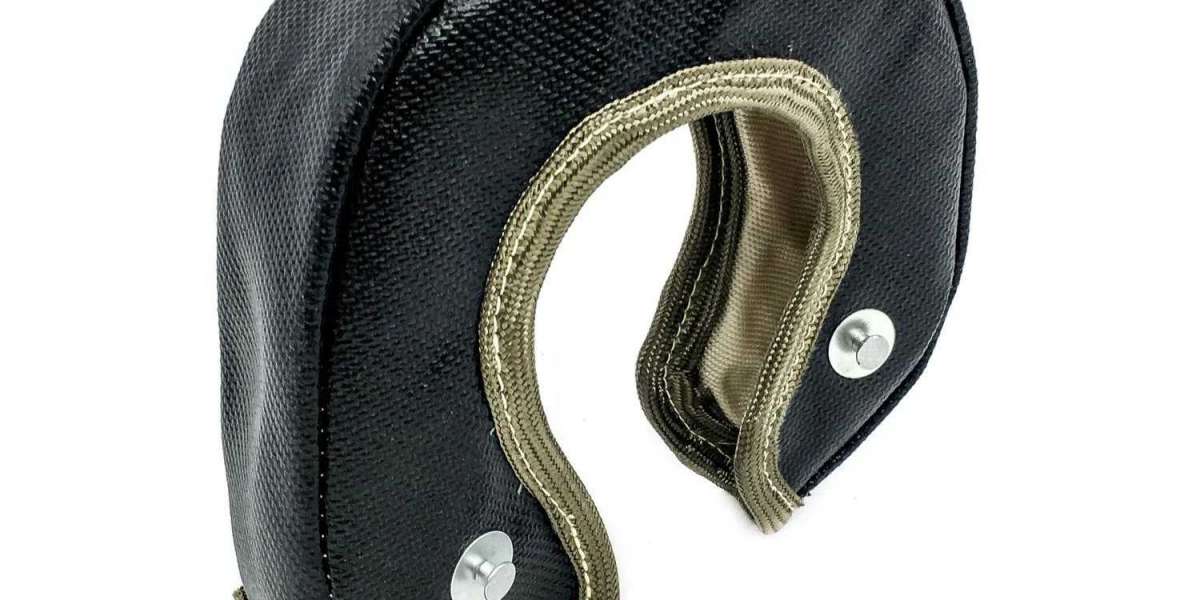Turbochargers are at the heart of high-performance engines, offering unparalleled power by forcing extra air into the combustion chamber. However, the open design of turbocharger inlets can expose the sensitive turbine blades to debris, dirt, and even small objects that may cause catastrophic damage. This is where a Turbo guard becomes an essential addition to safeguard your turbo system.
In this comprehensive guide, we’ll dive into the details of Turbo Guards, their benefits, installation process, and why they are indispensable for turbocharged vehicles.
What is a Turbo Guard?
A Turbo Guard is a protective mesh or screen placed over the inlet of a turbocharger. Unlike traditional air filters, which prioritize filtration at the cost of airflow, Turbo Guards are designed to offer minimal restriction to airflow while preventing harmful debris from entering the turbo.
These devices are often seen in high-performance or racing applications, where airflow is critical and turbocharger protection cannot be compromised.
Key Features of Turbo Guards
High-Flow Design: Turbo Guards are engineered with a mesh or screen that allows maximum airflow. This ensures the turbocharger operates efficiently without sacrificing power.
Debris Protection: The mesh blocks foreign objects such as dirt, rocks, and other debris from being sucked into the turbo, which could otherwise damage the turbine blades.
Lightweight Construction: Made from materials like aluminum or stainless steel, Turbo Guards are lightweight and durable, ideal for performance-oriented setups.
Aesthetic Appeal: Beyond functionality, Turbo Guards are available in various designs and finishes, adding a visual flair to the engine bay.
Advantages of Using a Turbo Guard
Enhanced Turbocharger Lifespan: By preventing debris from entering the turbo, a Turbo Guard significantly reduces wear and tear, extending the lifespan of the turbocharger.
Improved Performance: Unlike traditional filters that can restrict airflow, Turbo Guards maintain an unrestricted flow of air, which is crucial for high-performance engines.
Ease of Maintenance: Turbo Guards are easy to clean and maintain, requiring only occasional cleaning to remove accumulated dust or particles.
Cost-Effective Protection: Compared to the potential cost of repairing or replacing a damaged turbocharger, a Turbo Guard is an inexpensive and effective solution.
Types of Turbo Guards
Turbo Guards come in various designs, tailored to suit different applications:
Standard Mesh Guards: These feature a basic mesh design that provides excellent airflow and debris protection. They are ideal for general performance applications.
Filter-Style Guards: Combining elements of an air filter with a Turbo Guard, these are perfect for environments with a higher risk of fine dust or debris, such as off-road settings.
Custom Turbo Guards: Designed for specific turbocharger setups, custom guards can be crafted to match the dimensions and requirements of your turbo system.
When Should You Use a Turbo Guard?
Turbo Guards are most commonly used in the following scenarios:
Drag Racing: Vehicles in drag racing often run without traditional air filters to maximize airflow. Turbo Guards provide the necessary protection in such setups.
Street Performance Cars: For street cars with exposed or partially exposed turbochargers, Turbo Guards offer a balance between protection and performance.
Show Cars: Turbo Guards with sleek designs can add an aesthetic touch to show cars while protecting the turbo from accidental damage.
High-Risk Environments: If you drive in areas where small debris or dirt is prevalent, a Turbo Guard can prevent costly damage to your turbocharger.
Installation Guide for Turbo Guards
Installing a Turbo Guard is a straightforward process that doesn’t require extensive mechanical expertise. Here’s a step-by-step guide:
Gather Tools: You’ll typically need basic tools like screwdrivers, pliers, and possibly a wrench, depending on your turbocharger setup.
Select the Right Turbo Guard: Ensure the Turbo Guard matches the size and specifications of your turbocharger inlet.
Remove Existing Components: If your turbo has an existing air filter or protective cap, remove it to prepare for the Turbo Guard installation.
Fit the Turbo Guard: Align the Turbo Guard over the turbo inlet and secure it using the provided hardware, such as clamps or screws.
Double-Check Alignment: Ensure the guard is snugly fitted and doesn’t obstruct airflow. Misalignment could cause inefficiencies or vibrations.
Test the System: Start the engine and monitor for any unusual sounds or issues. The Turbo Guard should remain securely in place during operation.
Maintaining Your Turbo Guard
To ensure optimal performance, regular maintenance of your Turbo Guard is essential:
Inspect for Damage: Check the mesh for signs of wear or damage, such as tears or bent wires, and replace the guard if necessary.
Clean the Mesh: Use compressed air or a soft brush to remove accumulated dust and debris from the mesh. For stubborn dirt, wash the guard with mild soap and water, then dry it thoroughly before reinstallation.
Check for Secure Fitting: Periodically ensure the Turbo Guard is tightly secured to the turbo inlet.
Turbo Guard vs. Traditional Air Filters
While both Turbo Guards and air filters aim to protect the turbocharger, they serve different purposes:
| Feature | Turbo Guard | Air Filter |
|---|---|---|
| Airflow | Maximum airflow | Slight restriction |
| Debris Protection | Large debris | Fine particles |
| Best Application | Performance/racing setups | Everyday driving |
| Maintenance | Easy | Moderate |
For enthusiasts focused on performance and aesthetics, Turbo Guards are often the preferred choice, while traditional air filters are better suited for daily-driven vehicles prioritizing comprehensive filtration.
Choosing the Right Turbo Guard
When selecting a Turbo Guard, consider the following factors:
Turbocharger Size: Match the guard to the diameter of your turbo inlet for a perfect fit.
Material Quality: Opt for durable materials like stainless steel or anodized aluminum for long-lasting performance.
Design: Choose a design that complements your vehicle’s aesthetic and meets your airflow needs.
Environment: If you frequently drive in dusty or off-road conditions, consider a filter-style Turbo Guard for added protection.
Common Myths About Turbo Guards
Myth: Turbo Guards Restrict Airflow Fact: Turbo Guards are specifically designed to allow high airflow, unlike traditional filters.
Myth: Turbo Guards Aren’t Durable Fact: High-quality Turbo Guards are made from robust materials that can withstand harsh conditions.
Myth: Turbo Guards Are Only for Racing Fact: While popular in racing, Turbo Guards are also effective for street cars with exposed turbo setups.
Conclusion
A Turbo Guard is a simple yet effective accessory that combines protection and performance for turbocharged engines. Whether you’re a racer looking to maximize airflow or a car enthusiast wanting to safeguard your turbocharger from debris, a Turbo Guard is a valuable investment. Easy to install and maintain, it ensures your turbo system remains efficient and damage-free, providing peace of mind for years to come.
So, if you’re serious about protecting your turbo and optimizing its performance, consider adding a Turbo Guard to your setup today.








